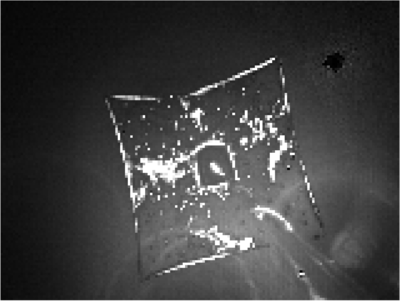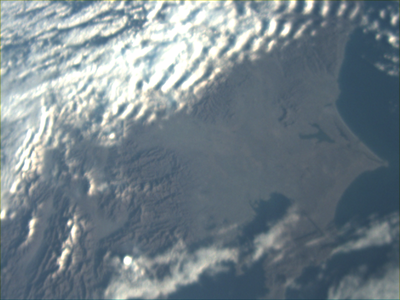Tokyo-based ALE Co., Ltd.(ALE), led by its CEO Lena Okajima, with the mission to make space closer to people, would like to notify that the first man-made shooting star satellite launched 18th January 2019, has begun its mission to lower its altitude.
ALE-1, the 1st satellite jointly developed by ALE and National University Corporation Tohoku University (Tohoku University) to try to create a man-made shooting star was launched on 18th January 2019 on the JAXA Innovative Satellite Technology Demonstration - 1 (Epsilon Rocket No. 4) with other six satellites and was put into orbit at an altitude of about 500km. The operating altitude for releasing particles to create man-made shooting stars is targeted for about 400km, thus the satellite will need to lower its altitude for about 100km to its necessary altitude for operation. A thin film orbit release device, DOM®: De-Orbit Mechanism (*1, DOM®), jointly developed with Nakashimada Engineering Works, Ltd. and Tohoku University, attached to the satellite is used to lower the altitude gradually using atmospheric drag. ALE-1 will reach the altitude of 400km in about one year (*2) and after technological verification, it will begin its emission operation of the man-made shooting stars.
■Change in schedule of altitude descent
At the time of its launch, ALE-1’s altitude descent was originally planned to start from March 2019, however, due to additional post-launch trials, detailed orbit data collection, and technological verifications for the use of second satellite(ALE-2) operations, the starting date for ALE-‘s altitude descent was postponed.
After the initial trials, completion of data accumulation, and technological verifications for ALE-2 operations, the DOM® thin film unfolded on 25th December 2019 and ALE-1’s altitude started to descend. The results from monitoring orbit transition for one month confirmed that the speed of altitude descendant of ALE-1 has had accelerated.
*1 DOM® is a registered trademark of Nakashimada Engineering Works, Ltd. (Yame-gun, Fukuoka Prefecture).
*2 Timings may vary greatly depending on solar activity.
■Unfolded DOM® thin film mounted on 1st satellite 【Source: Tohoku University】
■Japan (Kanto region) photographed from 2nd satellite
【About Nakashimada Engineering Works, Ltd.】
*Official website
http://www.nakashimada.co.jp/en.html
*Press release from Nakashimada Engineering Works, Ltd. on this subject
http://www.nakashimada.co.jp/news/press2020001.html
【About National University Corporation Tohoku University】
The Kuwahara Research Lab at the Tohoku University Graduate School of Engineering and ALE jointly developed the 1st and 2nd satellites. Using the abundant knowledge of Tohoku University, we are also jointly implementing post-satellite launch operation.
*Official website
https://www.tohoku.ac.jp/en/
*Press release from Tohoku University on this subject
https://www.eng.tohoku.ac.jp/news/news1/detail-,-id,1527.html